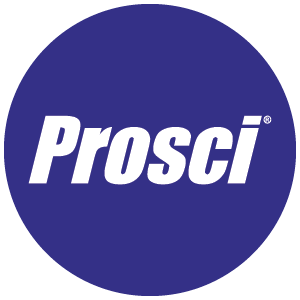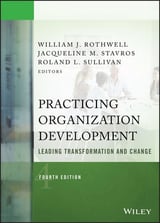Interview: Introducing the Change Scorecard to the OD World

4 Mins
Updated: July 3, 2023
Published: February 25, 2016

Two members of the Prosci team authored an innovative chapter on a new Change Scorecard for the fourth edition of Practicing Organization Development: Leading Transformation and Change, a leading textbook on organization development. The title of the chapter is "Measurement to Determine the Return on Change Management." We sat down with the authors, Prosci Chief Development Officer Tim Creasey and Prosci Executive Instructor Scott Ross, to discuss.
Watch Tim Creasey's video on the Scorecard and read the interview below:
How did you get involved in the writing of
Practicing Organization Development: Leading Transformation and Change?
Scott: I got to know one of the editors of the book, Roland Sullivan, and we got to talking. He asked me who I thought were the thought leaders in change management. And I said in some ways it’s kind of hard to say because there are a lot of ideas that we’ve had historically, but it’s hard to find people who are coming up with new ideas, who are really adding significantly to the discipline. So I mentioned Tim Creasey as one. Roland came back relatively shortly thereafter and asked if Tim and I would write a chapter for this book.
So Tim and I talked, and we decided we would do one on measurement and the Change Scorecard.
What sparked the idea for the Scorecard as it exists today?
Tim: The Scorecard emerged out of the last round of research Prosci did in 2013. We asked five very specific questions around measurement. As an analyst that had the honor of analyzing those questions in the findings, it became very apparent to me that there were specific phrases and terms and concepts that permeated all of the measurement questions. And so it was through that that I started to watch the measurement model unfold in terms of the three dimensions of measurement—organizational performance, individual performance, and change management performance, and then also across the time scale of early on in a change initiative, during the course of the initiative and then at the end of the initiative.
So, through the research, study participants as a group identified those three—organizational, individual and change management—and through the analysis you picked out all of those trends, and that created the framework of the scorecard. Is that right?
Tim: Yes, absolutely.
Scott: By the time Roland approached us about the chapter, the Scorecard was well underway. Tim had already taken the responses from the 2013 study and begun to sort them, so he and I began to argue notions, argue over labels and categories and things like that. Which is always fun. It was also a reflection of work that I’d been doing as a consultant. We had been using a change management readiness scorecard, and it parallels very closely with what’s in the Scorecard framework. So I was drawing on the consulting experience, and Tim was looking at the research. And then there was the early application of that by a couple of Prosci clients and the success that they experienced in using it.
That explains the history of the Scorecard. Now, the Scorecard addresses three areas: defining, measuring and tracking change management success. Which of these things do you think is the most common challenge for change practitioners?
Tim: I think all three are challenging. And I think that’s why measurement is sort of the next frontier for the discipline. Because of the sequence, I think concretely articulating and defining what success really means is where the challenge begins. And the scorecard framework gives a really structured, thoughtful, research-based approach to defining success at the outcome level for the organization or initiative, at the outcome level for the individual, and then at the activity level for the work of doing change management. There’s something really powerful around having both outcome and activity measures in this multi-dimensional scorecard.
Measurement has been and still is a problem that has plagued change managers, which is one of the reasons that makes the Scorecard such an exciting thing. Through your experience, what have you found doesn’t work? What do people try to do when measuring change that doesn’t work?
Scott: There have been a lot of efforts to measure the Return on Investment, and you can track all sorts of stuff. But at the end of the day, it’s all done post hoc. There isn’t necessarily a target you’re striving for at the outset, and nobody knows what it means, and it’s subject to debate and argument because you didn’t agree on it upfront. So there are lots of things that are challenging about a formal measurement of Return on Investment.
Part of what the Scorecard is about is the process of creating it. This is not something that the change manager comes up with out of thin air. They facilitate a conversation with the other business folks about what the objectives of the change are, what the role of adoption and usage is and how they would measure it.
Tim: And Prosci’s new Change Scorecard provides the direction, tools and foundation for doing just that.
About the Authors
 Tim Creasey is a globally recognized leader in change management. With over 15 years of experience, his work forms the foundation of the largest body of knowledge in the world on managing the people side of change to deliver organizational results. As a respected authority on change management, Tim has had the privilege to speak and engage with many of the Fortune 100 leaders and their companies. He has spoken at some of the largest change and process management conference in the world and co-authored the book Change Management: The People Side of Change.
Tim Creasey is a globally recognized leader in change management. With over 15 years of experience, his work forms the foundation of the largest body of knowledge in the world on managing the people side of change to deliver organizational results. As a respected authority on change management, Tim has had the privilege to speak and engage with many of the Fortune 100 leaders and their companies. He has spoken at some of the largest change and process management conference in the world and co-authored the book Change Management: The People Side of Change.
Connect with Tim on LinkedIn
 Scott Ross has more than 25 years of experience leading and managing change as a corporate manager and consultant, including involvement with mergers, acquisitions, divestitures, takeovers, bankruptcies, restructurings, system implementations and policy changes. He’s worked in various industries, including manufacturing, distribution, medical devices, software, financial services and education. For Prosci, Scott is an Executive Instructor, presenting and teaching Prosci’s change management methodology through Prosci’s change management training programs.
Scott Ross has more than 25 years of experience leading and managing change as a corporate manager and consultant, including involvement with mergers, acquisitions, divestitures, takeovers, bankruptcies, restructurings, system implementations and policy changes. He’s worked in various industries, including manufacturing, distribution, medical devices, software, financial services and education. For Prosci, Scott is an Executive Instructor, presenting and teaching Prosci’s change management methodology through Prosci’s change management training programs.
Connect with Scott on LinkedIn

“Practicing Organization Development: Leading Transformation and Change, Fourth Edition is the revised guide to successful organization development. This edition has been updated to explore the cutting edge of change management, leadership development, organizational transformation, and society benefit…[It] offers both theoretical concepts and guides to practical applications, providing you with the knowledge, techniques, and tools to put organizational development to effective use in the workplace.” – book description from the publisher


